Your website is often the first point of contact between your business and potential customers. It’s important to make a good impression by presenting clear, concise, and engaging copy that effectively communicates the value of your product or service. In this article, we will provide tips on how to write and improve your website copy to attract and retain visitors.
From identifying your audience to using strong calls to action, these strategies will help you create copy that converts.
1. Know Your Audience and Utilize Their Feedback
Identifying your target audience is an important first step in writing and improving your website copy.
By understanding your target audience, you can craft copy that speaks directly to them and addresses their needs and concerns. This makes your website more relevant and engaging for your readers and help drive traffic and conversions.
Here are a few things to consider when identifying your target audience:
- Who are you trying to reach? Consider the age, gender, location, and other demographics of your ideal reader.
- What are their needs and interests? Think about what your target audience is looking for. And how your website can address their needs and interests.
- What are their pain points? Consider any challenges or problems your target audience may be facing. And how your website can provide solutions.
If you already have content on your website, don’t forget to listen to your audience. Ask what people think of it. And utilize feedback to improve your website copy.
An interesting example is Oracle’s website. This Fortune 500 computer technology company offers tons of advanced hardware and software. On its homepage, it highlights complex topics such as MySQL Databases and Cloud Infrastructure. The average internet user would not understand a word of it, but that’s fine as long as Oracle’s targeted audience does.

2. Keep It Simple
Simple, easy-to-understand language is more likely to be understood by a wider audience. Make use of language that is unambiguous, straightforward, and concise.
If you are writing an English article, simple language helps people who may not be native English speakers to understand your content.
Simple content also helps improve readability. Simple language is easier to scan and understand. This is especially important since most people scan web pages rather than reading them word for word.
Keeping your content simple also helps to clarify your message. By using straightforward language and short sentences, you can more effectively communicate your message. This makes it easier for readers to remember. It is also easier for search engines to understand uncomplicated content. This improves your search engine rankings.
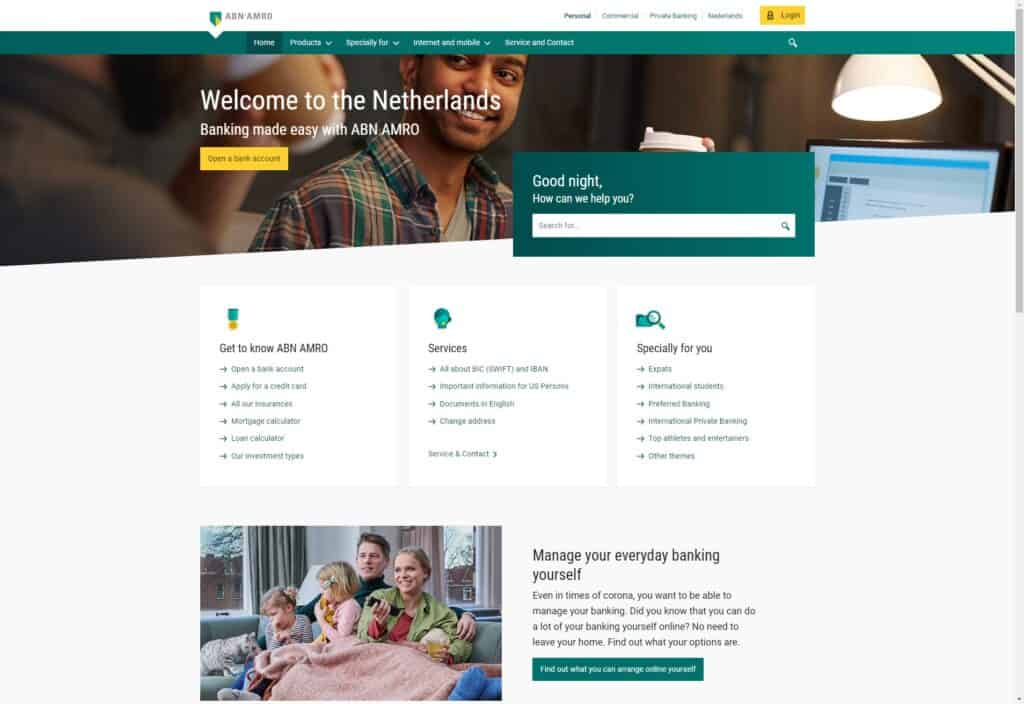
3. Chunk Text into Smaller Paragraphs
People tend to scan web pages rather than read them word for word, so make sure your copy is easy to scan and understand. Use short paragraphs to break up the text and make it more readable.
Long blocks of text can be overwhelming and difficult for readers to digest, especially when they are reading on a screen. By breaking up your text into smaller paragraphs, you can make it easier for readers to go through your content.
Make use of the inverted pyramid, a popular technique often used in news stories. Start with the most important information. Then go to the details, followed by other extra info and background stories. By starting with info in the most concise format possible, readers will immediately understand your core message. When they are interested and go through the article, they will find more and more details.
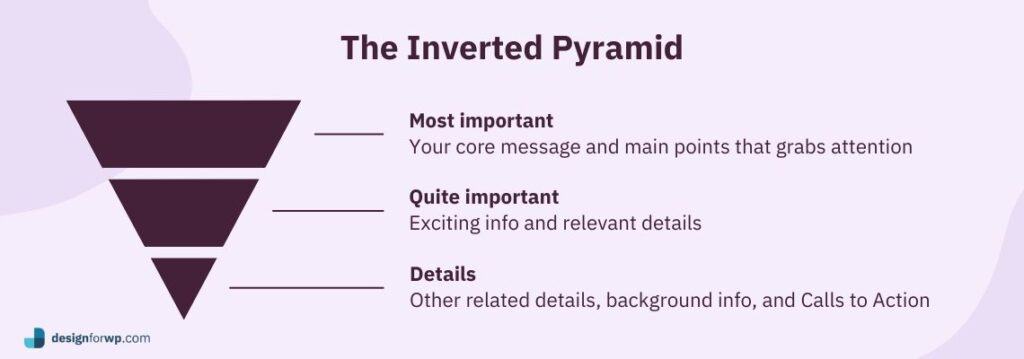
See below an example by Philips.com. This healthcare company has a dedicated page about its strategic focus and uses multiple paragraphs to make the text on that page easier to process.
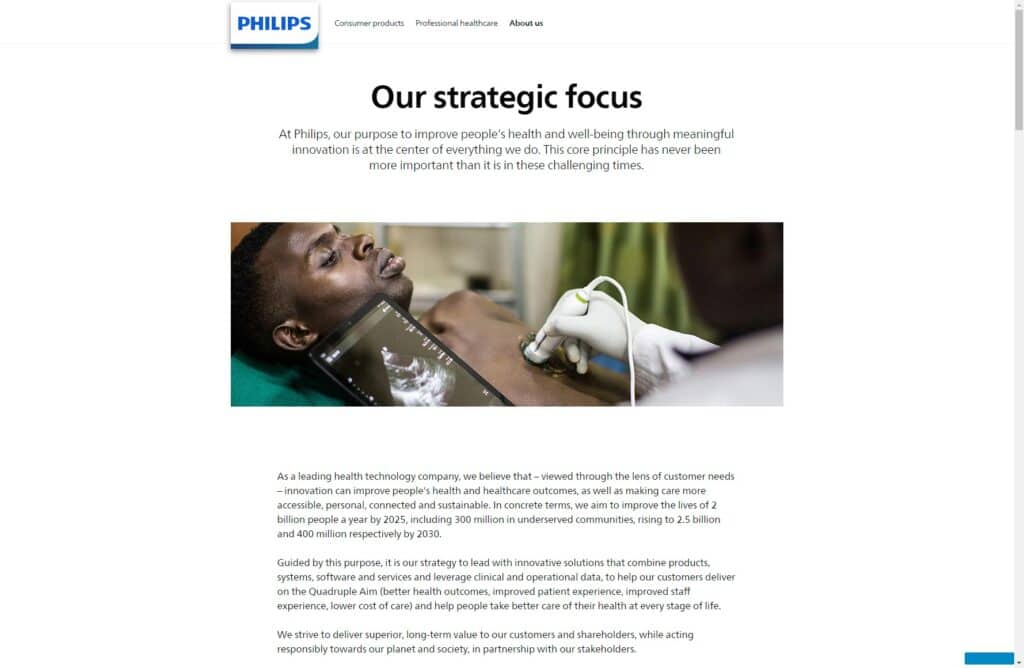
Chunking text into smaller paragraphs also helps to emphasize key points. By separating your ideas into smaller paragraphs, you give each point more emphasis. This can help readers to better understand and remember your key points.
As a bonus, smaller paragraphs give your website more breath. Smaller paragraphs make your copy more visually appealing, as they create white space on the page. This makes your website more inviting and engaging for readers.
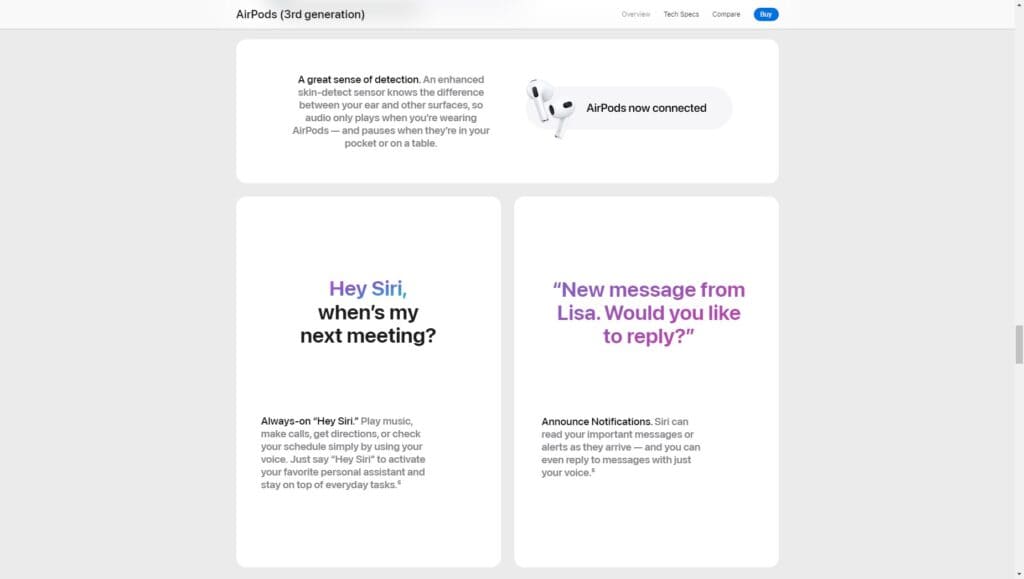
4. Use Bullet Points, Icons, and Formatting
Like smaller paragraphs, bullet points help to break up long blocks of text. This makes your content easier to scan and understand. They also clearly emphasize your key points, making them stand out more.
Bullet points really help to organize information:
- First, they make it easier for readers to understand the structure and hierarchy of your content.
- Second, by using bullet points and other formatting elements, such as bold or italic text, your copy becomes more engaging.
- Third, they add visual interest, especially if you use icons.
On websites, it is important to keep your content scannable. Bullet points and formatting are perfect tools to achieve this.
See below how Target.com, one of the United States’ biggest retailers, uses icons to highlight some of its core aspects.
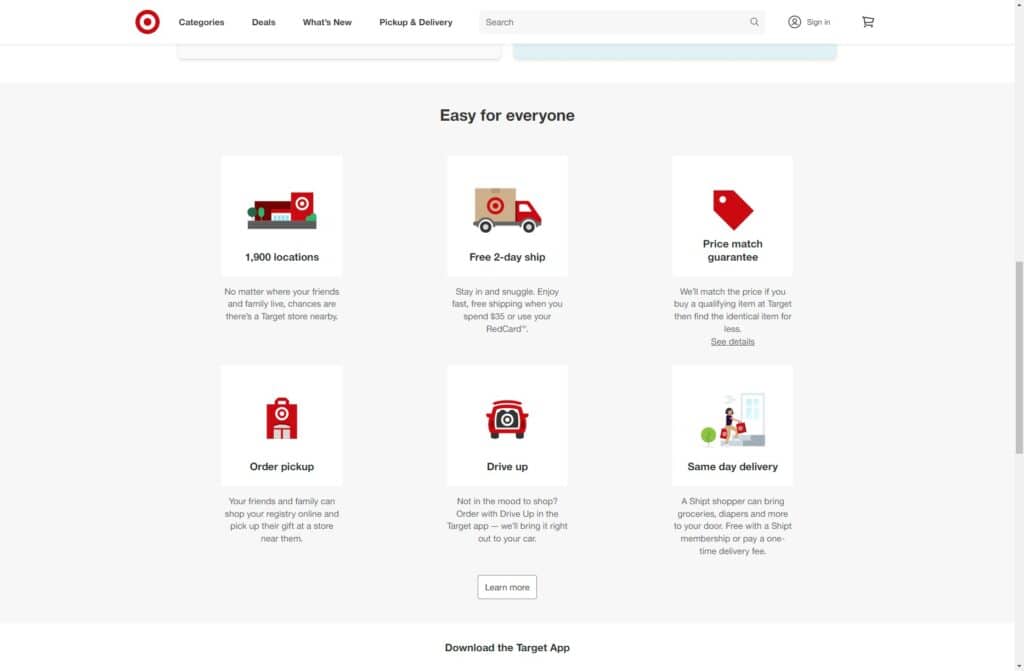
Below is another example by Apple. Notice how key specifications of the iPhone are formatted and presented to readers. A slider is used with multiple blocks, distinct icons, and colored texts.
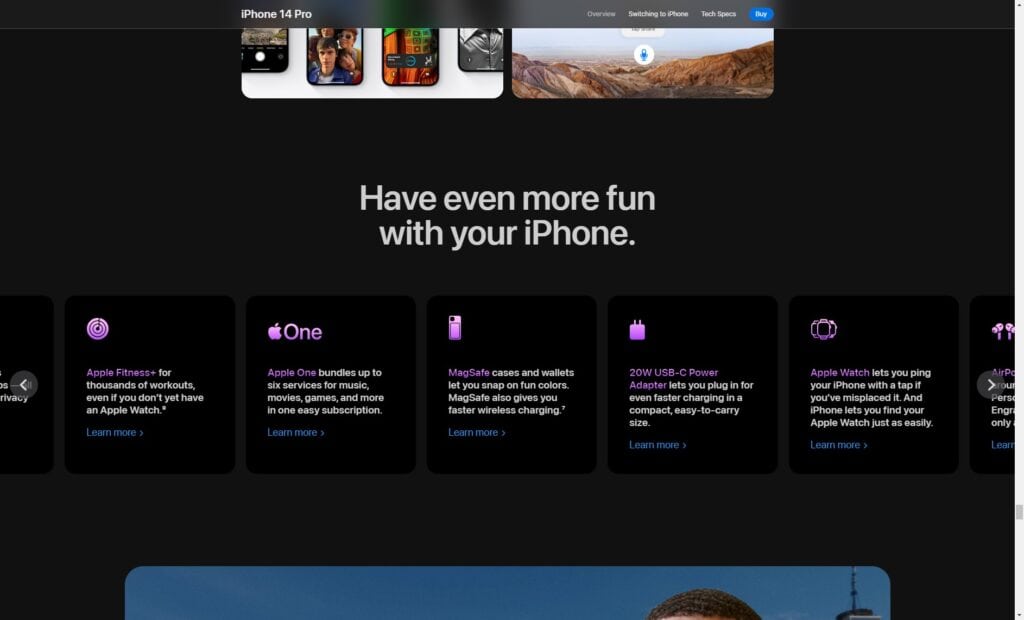
5. Use Headings and Subheadings
Headings and subheadings allow you to organize and structure content. This as well makes it easier for readers to scan your content. Like bullet points and smaller paragraphs, headings and subheadings will break up long blocks of text.
Another important part aspect of headings is the way they improve search engine optimization (SEO). Headings and subheadings give search engines a better understanding of the structure and content of your page. This improves your search engine rankings.

6. Be Specific
Write clearly about the topic you are discussing. Be specific about the problems or solutions that you cover. By being specific and using concrete examples and details, you can help readers to better understand and remember your message.
It also helps to build credibility. By using specific, accurate, and well-researched information, you can show your expertise on the topic. This is especially important if you want your readers to do something, such as contacting you or buying a product or service.
A great example is Valani. Upon entering the website, the content is very specific and clear. There are multiple references to Valani’s unique selling points: selling sustainable clothing.
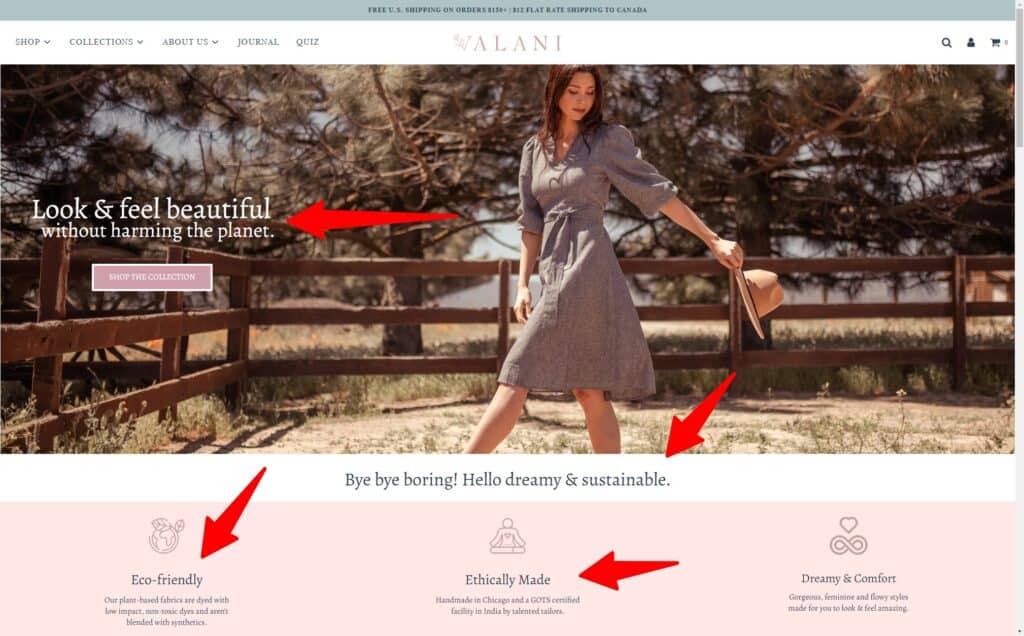
7. Use Active Voice
In the active voice, the subject is performing an action. Let’s look at the following example:
“The website is being built by a friend.”
This is an example of passive voice. Rewriting the sentence to active voice looks like this:
“A friend is building the website.”
Using active voice in your website copy emphasizes the subject of the sentence and the action they are taking. This makes your copy more engaging and motivating for readers.
Active voice also tends to be more concise than passive voice. This helps to make your copy more direct and to the point. You can more clearly convey an action or process which helps readers to understand and remember your message.
8. Optimize Your Calls to Action
Encourage readers to take action by using strong, action-oriented language. Use verbs like “discover,” “learn,” “get,” and “start” to motivate readers to take the next step.
You can make your calls to action informative and specific by explaining to readers where the click will lead them. For instance, a call-to-action button that reads “Start my free trial” is more compelling than one that says “I’m ready to go.”
Strong Calls to Action encourage readers to take the next step. Whether that’s purchasing a product, signing up for a newsletter, or filling out a form.
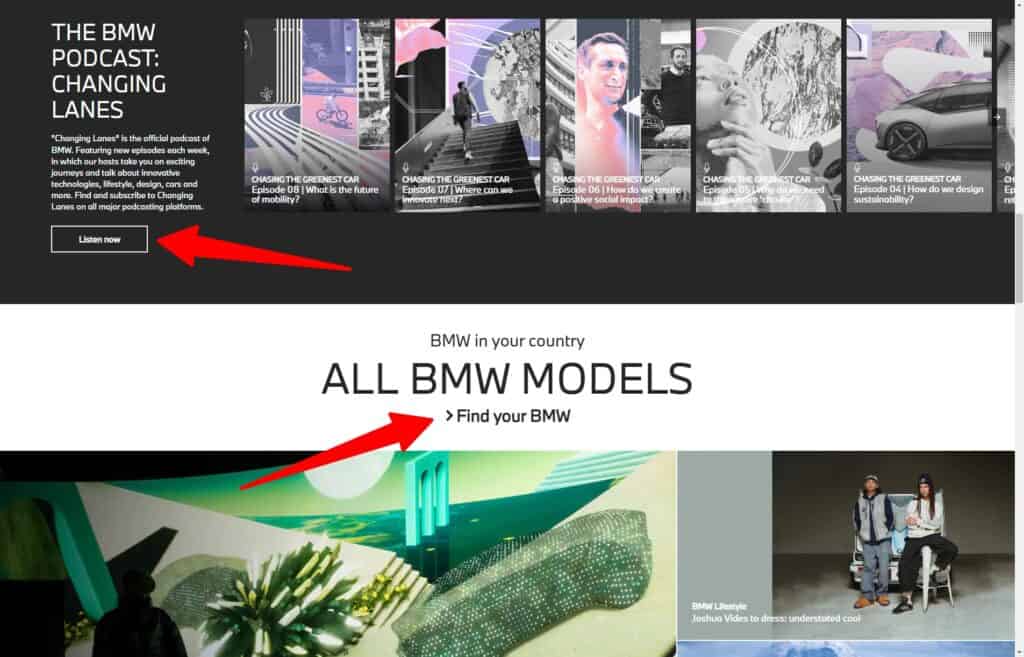
9. Research Other Businesses
If you don’t know where to start with your content, you can search on Google to get an idea of what your competitors are doing. This will provide you with an opportunity to learn from their strategies.
Of course, this is not an encouragement to steal their ideas in any way. Your content should be unique and tailored to your specific audience. But researching other websites can be a helpful way to get inspiration and generate ideas.
Read how those businesses discuss the topic or products you want to write about. Write down what you like and don’t like. Maybe you like their tone of voice. Or how they drive conversions. On the other hand, you might dislike some specific words they used. Use those insights as inspiration for your own content.
By researching other businesses or websites in your industry, you can also get a better understanding of what they are offering and how they are positioning themselves. This allows you to identify any gaps or opportunities in the market and create a unique value proposition for your own business.
10. Edit, Proofread, and Keep It Up to Date
Always take the time to proofread and edit your copy to ensure it is free of errors and reads smoothly. Consider having someone else review your copy as well to catch any mistakes you might have missed.
In general, website copy should be concise and straightforward. Editing and proofreading will help you to clarify and refine your message. Consider eliminating unnecessary words and phrases. Make sure your ideas are expressed clearly and concisely.
Keep It Up To Date
Make also sure to keep your copy up to date. Improve your website copy by updating content when needed, such as references to events or news articles. And remove outdated content to keep your website relevant and engaging for your audience.
Keeping your content up to date also helps you to improve your SEO. Search engines tend to rank your website higher if the content is up-to-date and improves over time.
One way to do this is by writing about recent events or hot topics. For example, if you are writing copy for a travel website and ‘sustainable tourism’ is an ongoing industry trend, consider writing about this subject on your blog or homepage. You could also add content that is relevant to the time of the year. In the example below you see the website of the North West Air Ambulance Charity, updated specifically for the Christmas season.
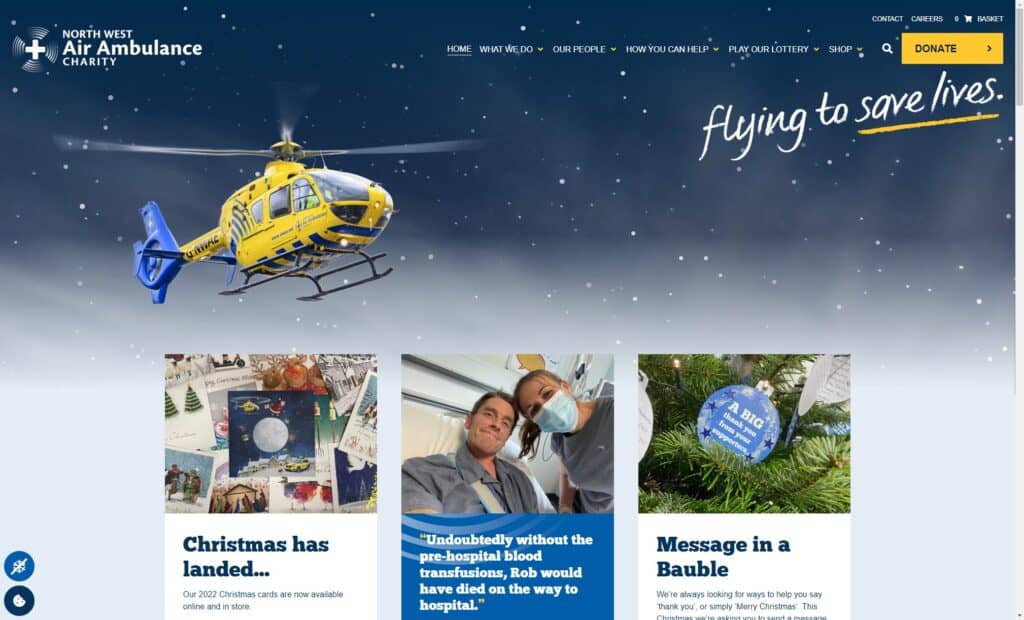
Useful Tools
There are several tools available that can help you improve your website copy. Here are a few examples:
Grammar and spelling checkers. One of the most popular options is Grammarly. It helps you identify and correct errors in your writing, such as typos, grammar mistakes, and misspellings. The basic version is free and can be used in most word processors (such as Word or Google Docs). Grammarly also integrates directly with most web browsers.
Hemingway App. Hemingway helps you write clear, concise, and easy-to-read copy. It highlights long and complex sentences, passive voice, and other writing issues. It is a great tool to write accessible content without jargon.
CoSchedule Headline Analyser. The HeadlineAnalyzer by CoSchedule helps you to write better headlines that drive more traffic and shares.
Thesaurus.com. Thesaurus is a great tool to help you find synonyms and alternative words to use in your writing. This helps you to avoid repetition and make your copy more engaging and varied.
Semrush. Semrush is an SEO tool that helps you find the right keywords and topics to write about. This is especially useful if you want to write content with the specific goal of ranking high in search engines.
Conclusion
Writing and improving great website copy is essential for attracting traffic and engaging readers. This helps you to increase your chances of getting a bigger audience and more customers.
Follow best practices such as identifying your target audience, keeping copy concise and to the point, and using strong action-oriented language. That way, you create copy that is clear, engaging, and effective.
Additionally, use elements like headings, subheadings, bullet points, and shorter paragraphs. This helps to improve the readability and effectiveness of your website copy.
By following the 10 tips above, you will create or improve your website copy. This drives traffic, engages readers, and converts visitors into customers.
Want to elevate your content even further? Use the right photos to enhance your website.
